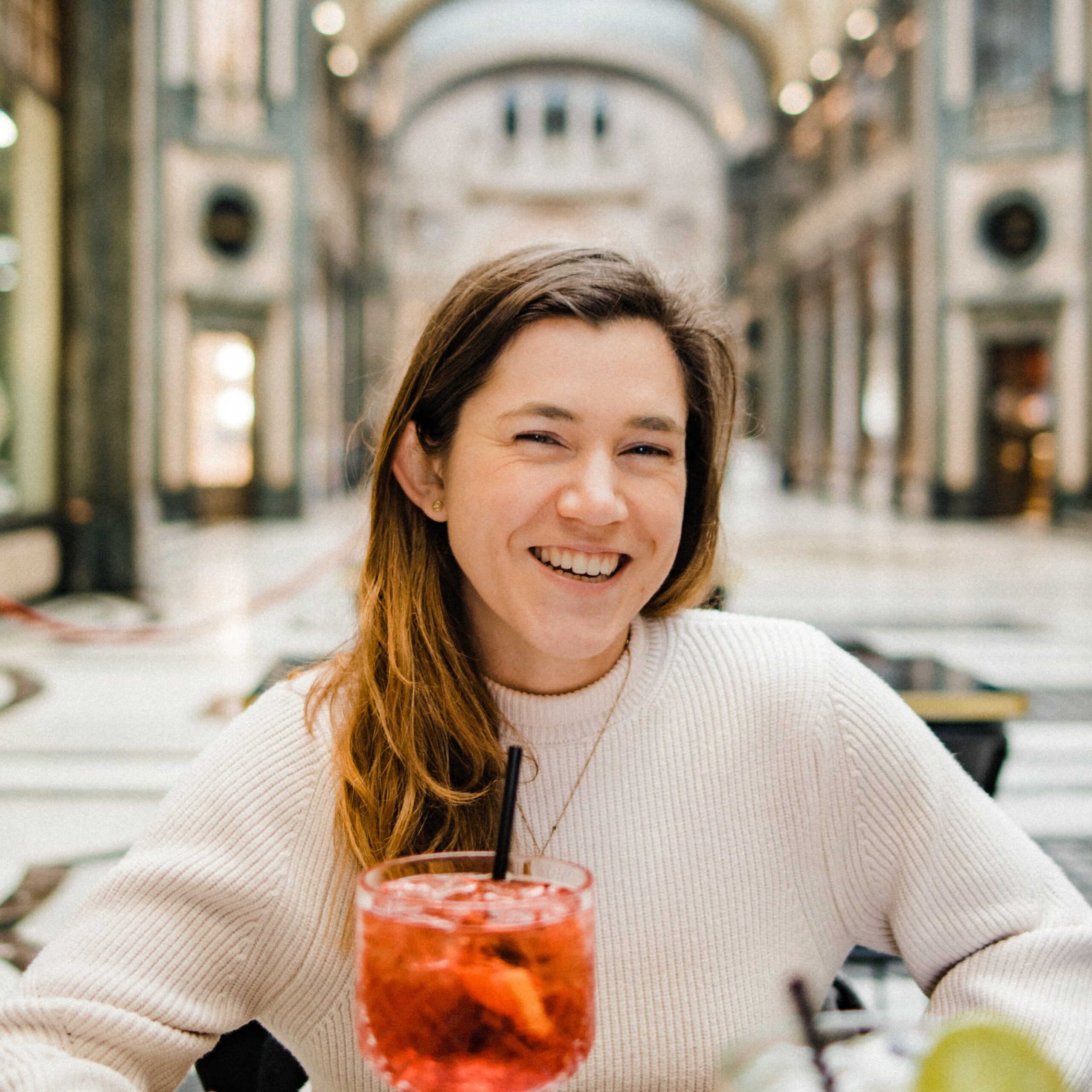Last Updated on October 30, 2025 by Emma Fajcz | Published: October 25, 2022
Sitting down after a day of sightseeing is the perfect time to enjoy the Italian tradition of aperitivo. Aperitivo (or apericena, you might hear it called) is an essential moment of the Italian experience. It’s a time to relax and enjoy the slow life, to watch the life of the town pass by while sharing a few laughs, drinks, and eats with friends. Here’s more about apericena, Italy’s favorite tradition!
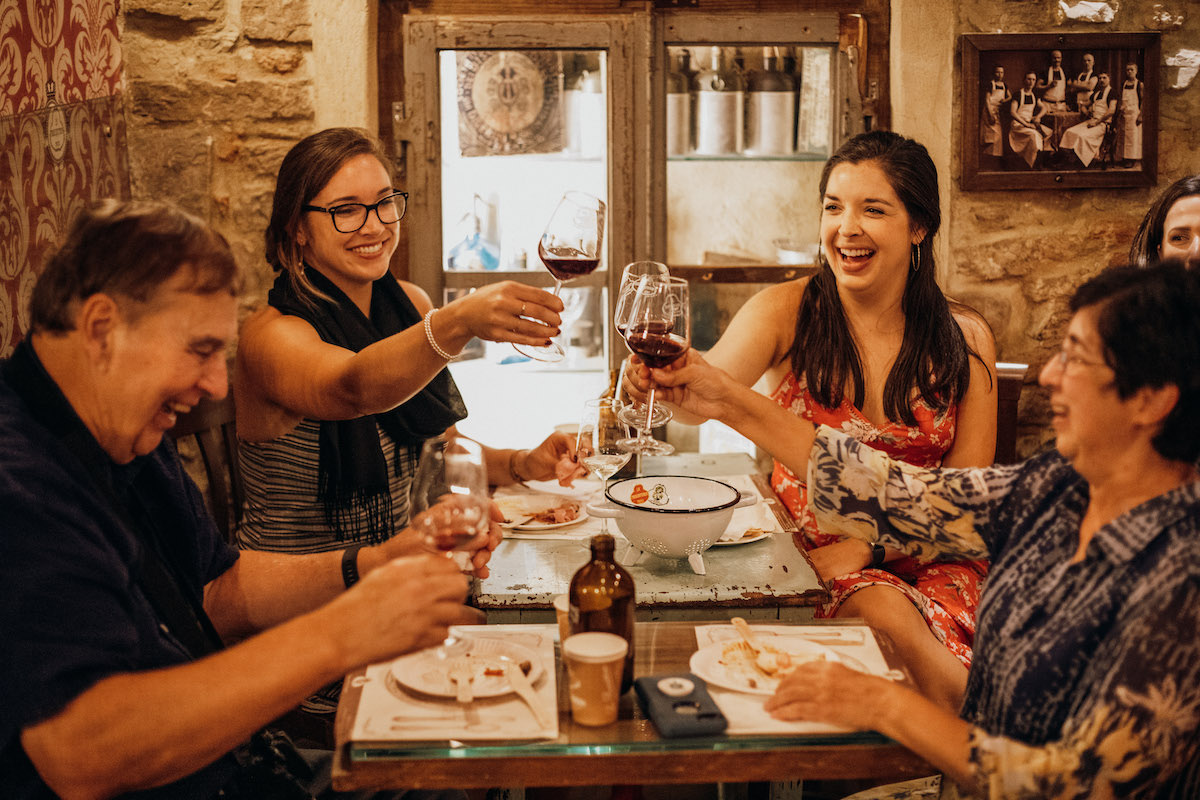
The Apericena Tradition
You’ve probably heard of this tradition from your friends who have studied abroad or visited Italy, but what exactly is apericena? It’s the Italian version of Happy Hour, but we like to think it is more than that!
Aperitivo or apericena is an event to share a drink and a bite to eat, usually before dinner, between 4 pm and 8 pm. An evening aperitivo is the perfect way to wind down from a long day, as well as grab a little drink and snack to open up your appetite for dinner. Or in the case of an abundant apericena, it might even be a way to save a few euros on “dinner” and drinks.
Where Did Aperitivo Come From?
Many often associate the aperitivo tradition with Venice, as this was where the classic cocktail Aperol Spritz initially became famous. But the true origin is in another part of Northern Italy: the city of Turin in the Northwest region beneath the alps.
Before the Aperol Spritz, there was Vermouth–specifically, Vermouth di Torino. Vermouth had long been a medicinal drink, but a new recipe by Carpano adjusted it to be much tastier. Local nobles took to mixing a bit of vermouth with soda water and lemon, enjoying it in the afternoon with light snacks.
What locally became known as the “Vermouth Hour” quickly spread in popularity and took on the name aperitivo.
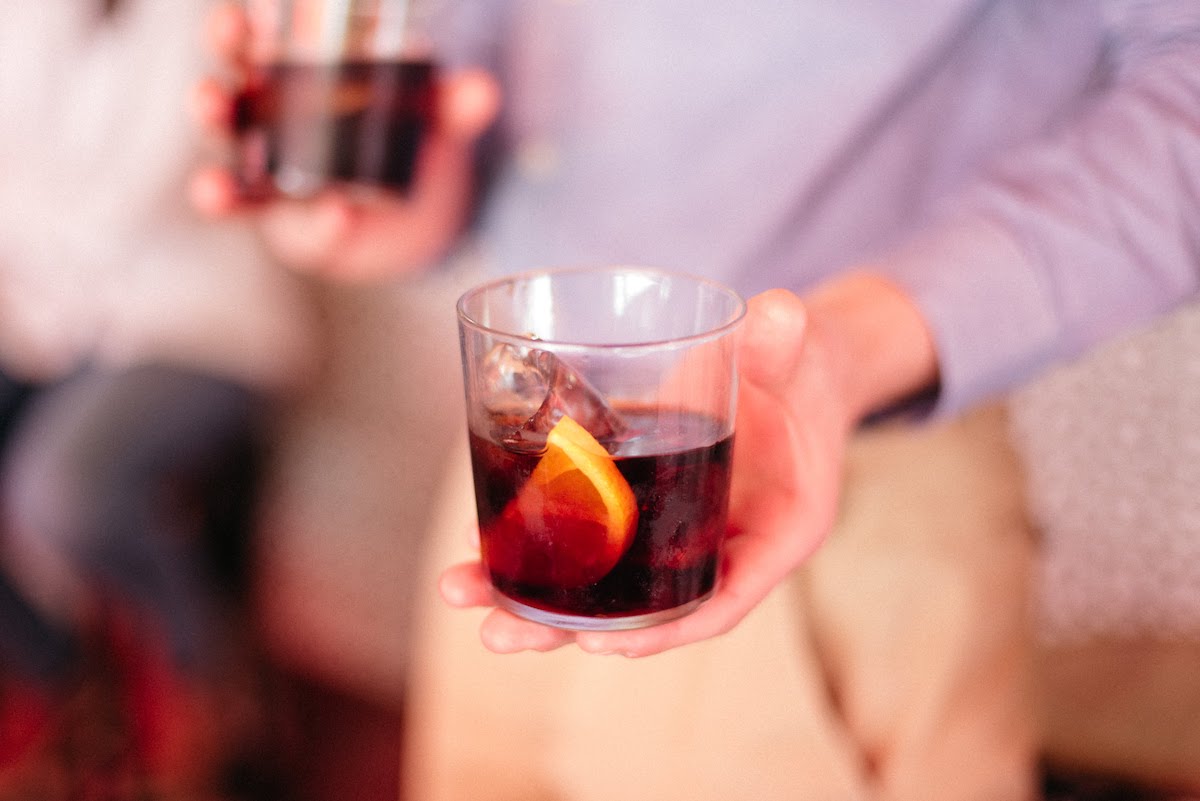
What’s the Difference Between Aperitivo and Apericena?
While you might hear both of these used interchangeably around Italy, there is a slight difference. It all comes down to this: how much food is on your table?
- Aperitivo: An aperitivo is more commonly just a cocktail (like our favorite Spritz) with just a few stuzzichini (table snacks, like chips, olives, and nuts). Just a little bit to get something in your stomach and counteract your drink.
- Apericena: This tends to be a bit more abundant, like a buffet, or a plate of small snacks like pizzette, sandwiches, or other more filling snacks. Usually, you’ll find that aperitivo costs just the same as a cocktail, while an apericena might cost a few euros more to cover the food.
Every city has its own version, and you’ll find something different everywhere. While in northern cities like Milan the buffet apericena is a popular find, Venice might offer little cicchetti – like tapas – with your happy hour drink, and Rome bars might just stick to a classic aperitivo.

What Are Some Classic Apericena Bites?
What you’ll be served at an apericena is a little different depending on where you are in Italy. You’ll find different classics in every city around Italy. Here are a few different bites you can expect when you sit down for an apericena.
Tagliere
This delicious charcuterie board is made with the best tastes of Italy. Always a crowd pleaser, this is the most common offering at an abundant aperitivo or apericena. A tagliere might be of just salumi or just cheese, but is often a mixed plate.
Local cheeses and salumi are sliced and served with a cocktail, or glass of wine, sometimes with a local jam or honey for a final touch. Especially if you are in Florence, you will often be served a selection of local pecorino cheese with delectable honey to drizzle on top.
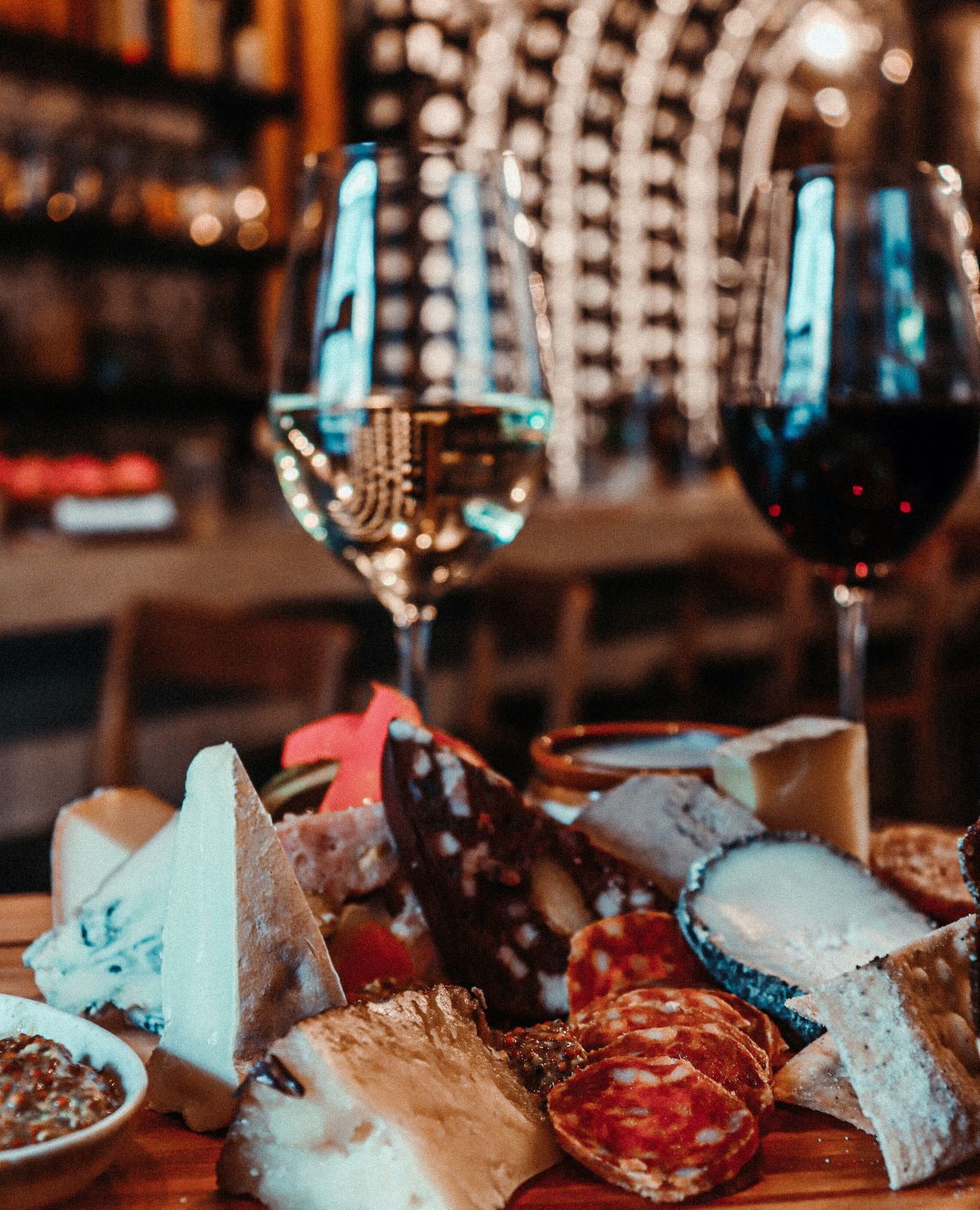
Buffets
The most abundant apericena is marked by a delicious buffet. Buffets are found all over Italy, but are a true tradition in Milan. Usually, you’ll pay for a cocktail, plus a few euros, to have an endless buffet.
Every bar serves it up a bit differently, but you are sure to find a mix of pasta and rice dishes, veggies, focaccia or bread, and much more. You’ll even find bars or restaurants that do themed buffets like sushi, Indian, or Mexican cuisine.

Cicchetti
The favorite apericena food in Venice is cicchetti! These are much like Spanish tapas, and consist of small bruschetta or focaccia served with various toppings. You’ll most likely find a few with tasty baccalà (codfish), as it is a local favorite.
Some bars might serve a selection with every evening drink; others, on the other hand, might charge per cicchetti.
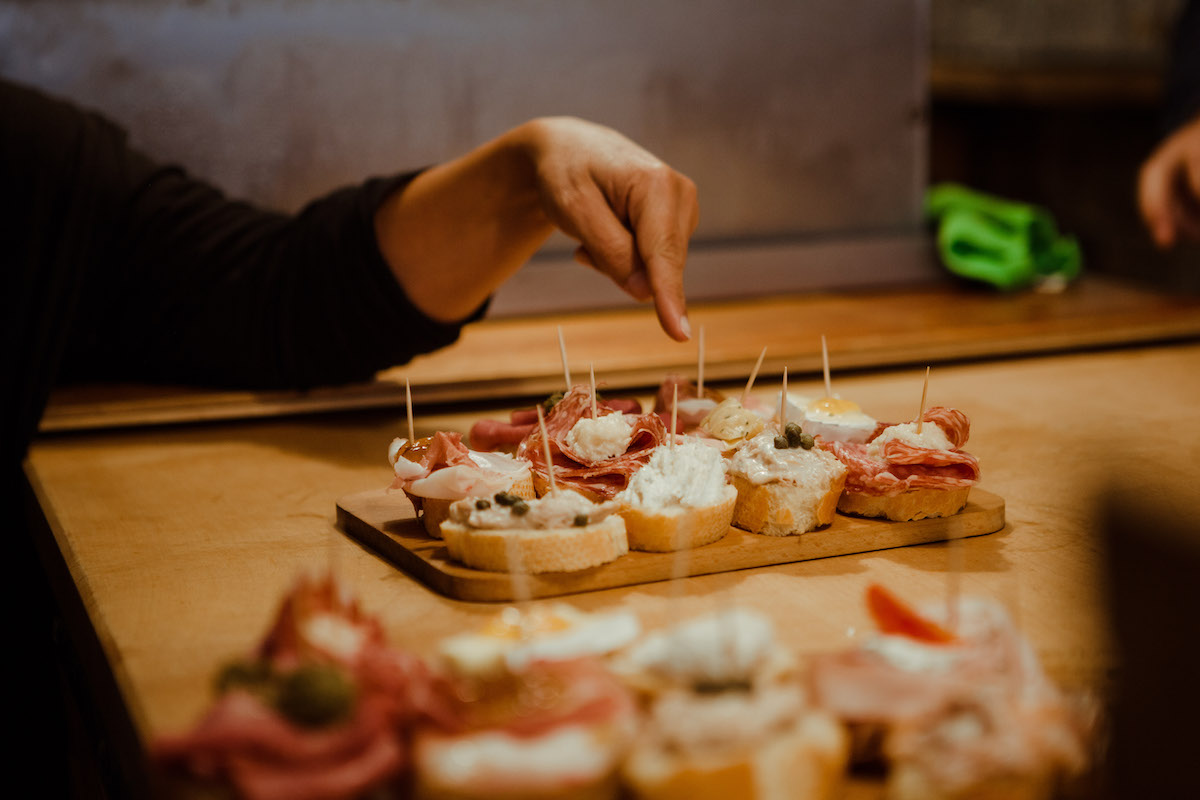
What Do You Drink for Apericena?
Sure, the photos of an apericena in Italy are filled with the bright orange glasses of Aperol Spritz, but this isn’t your only option. Aperitivo can come with any drink of choice!
- Aperol Spritz: This drink was designed to be something refreshing: bubbles of Prosecco and soda water and light on the alcohol to open up your palate with an herbaceous flavor. Try other spirits in a Spritz like Campari (which is slightly more bitter), Select (which is a bit sweeter), or Saint-Germain (used in the popular Hugo Spritz).
- Negroni Cocktail: This famous drink from Florence calls for Gin, Vermouth, and Campari or other bitter aperitifs. If that seems a little too bitter for your taste, swap for the Sbagliato, which switches the Gin for a spumante (sparkling wine). This version comes from Bar Basso in Milan, where you can still visit and enjoy the historic aperitif.
- Local Wines: Want something simpler? Enjoy a glass of excellent local wine. Apericena gives you the opportunity to try something new and find your new favorite Italian wine. Here’s some of our favorite Veneto wines in Northern Italy to try!
- Craft Cocktails: Aperitivo isn’t confined to classic drinks either; keep an eye out for excellent craft cocktail bars in the city. Here are a few of our favorite cocktail bars in Florence to save for your next trip!
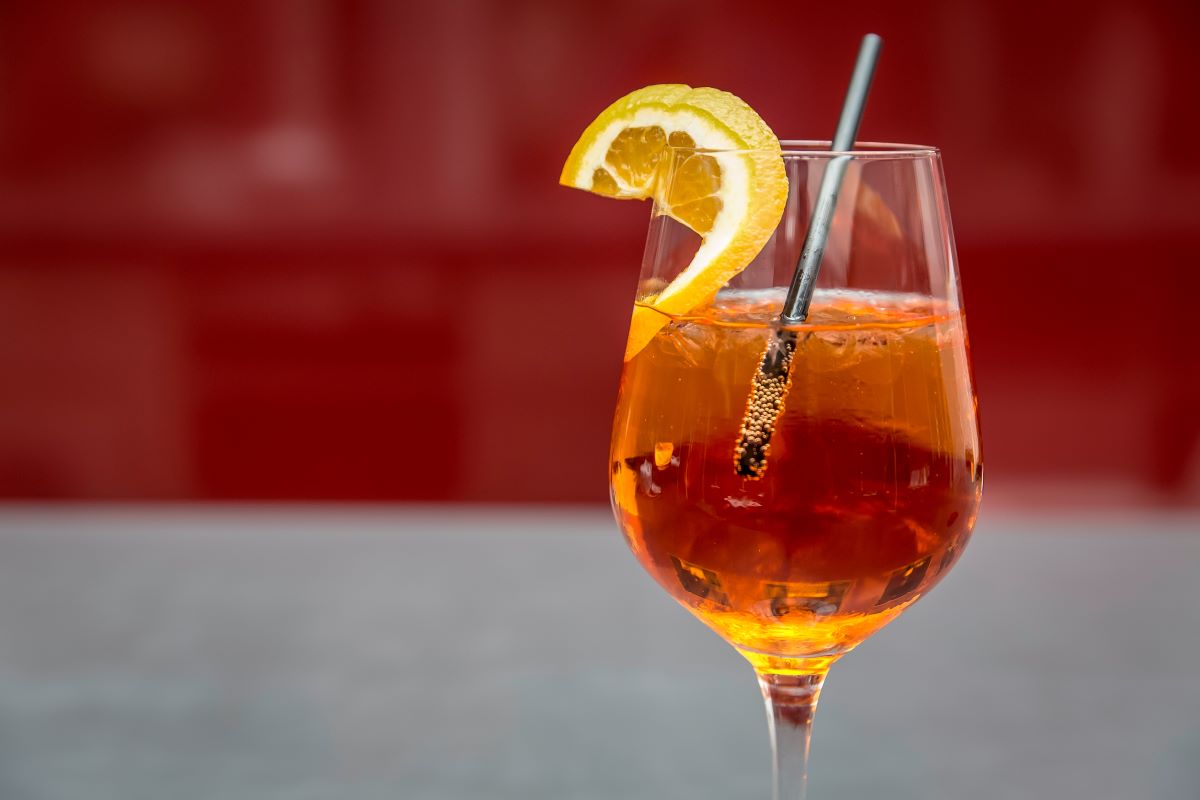
Explore Florence’s Cuisine Like a Local
Experience Florence at its most delicious on our Florence food and wine tour! During this evening journey through the city’s beloved Oltrarno neighborhood, you’ll sip prosecco from a centuries-old wine window, master the art of the perfect negroni, and feast on authentic Tuscan dishes from handmade pasta to a sizzling bistecca alla Fiorentina.
Along the way, you’ll uncover the stories behind Florence’s food, wine, and traditions, guided by locals who know every hidden enoteca and family-run trattoria. Come hungry, stay curious, and taste the true heart of Tuscany.
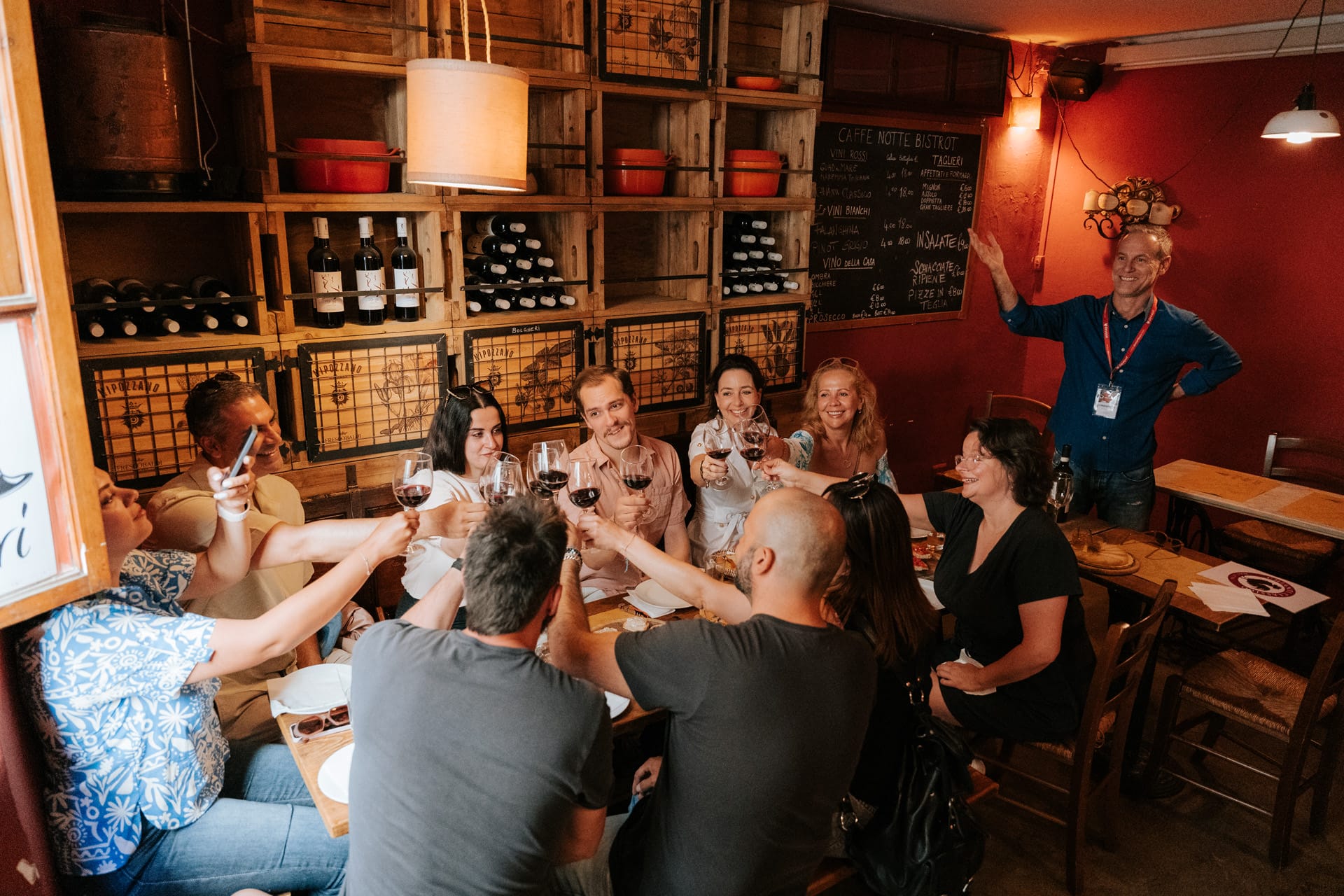
Featured Review: Florence Food & Wine Tour
⭐️⭐️⭐️⭐️⭐️ “Lorenzo was fantastic! We went to 5 local spots each was unique and amazing. As a solo traveller great way to meet people and to experience the local cuisine and culture. Highly recommend!”
– Joel on GetYourGuide
Apericena in Italy FAQs
What does apericena mean in Italian?
Apericena is a combination of two Italian words: aperitivo (a pre-dinner drink and light snack) and cena (dinner). It refers to a relaxed evening meal that starts as an aperitivo but can turn into a light dinner, often featuring a generous buffet of small bites, pastas, salads, and regional specialties.
This tradition is popular across Italy, especially in cities like Milan and Turin. Apericena is less about formality and more about socializing, sipping, and savoring a variety of flavors without the structure of a full sit-down meal.
What time is apericena?
Apericena typically takes place in the evening between 6:30 pm and 9 pm. It can often blend seamlessly into dinner. Locals gather at bars and cafés after work to enjoy drinks like Aperol spritz, prosecco, or wine alongside a spread of small dishes, making it a leisurely and social way to dine Italian-style.
What makes apericena special?
What sets apericena apart is its blend of relaxed dining and social connection. It’s not just a meal; it’s an experience that captures Italy’s love for good food, good company, and unhurried conversation. You can enjoy a drink and sample a wide variety of regional dishes, from cheeses and cured meats to pasta salads and crostini, all without the formality of a full dinner. It’s the perfect balance between aperitivo and cena: casual, flavorful, and quintessentially Italian.
